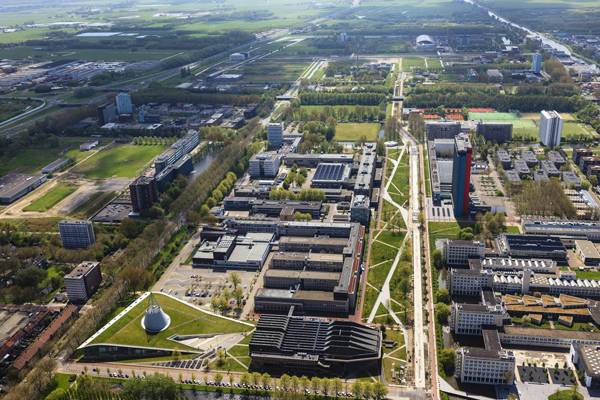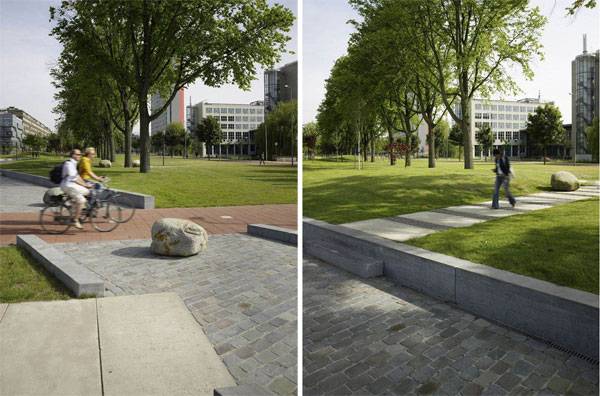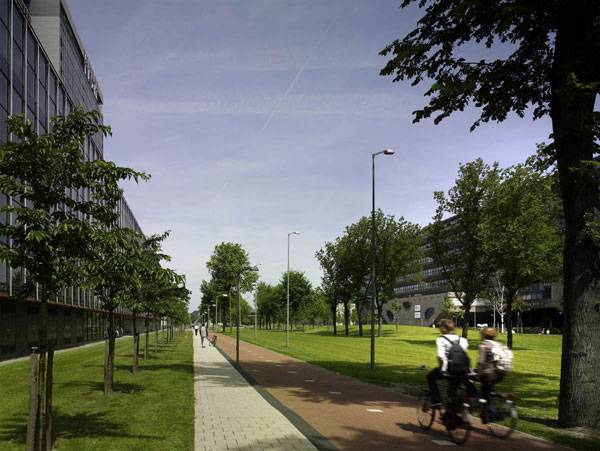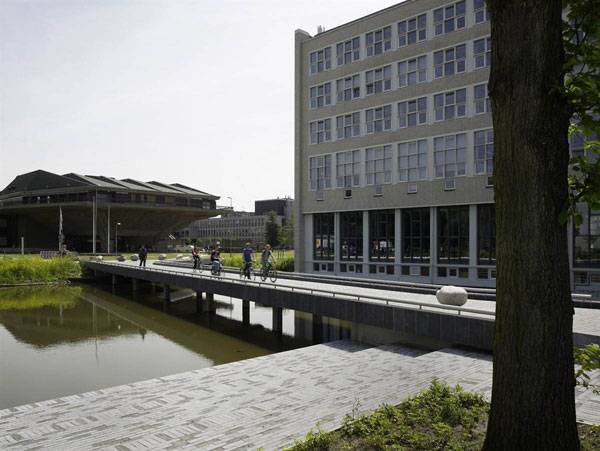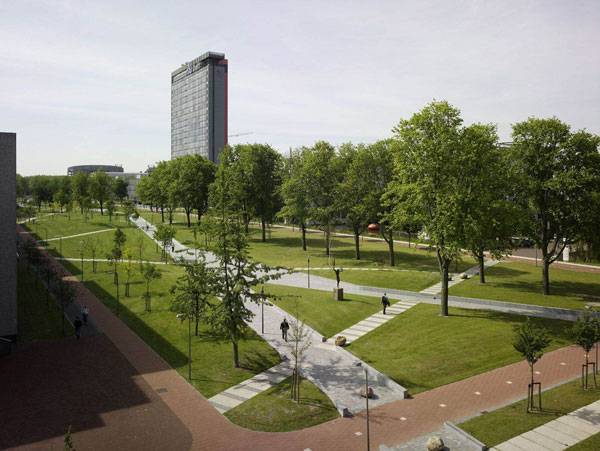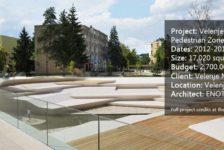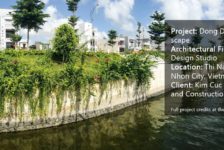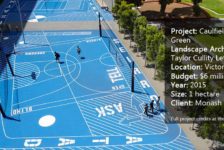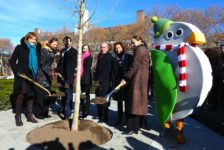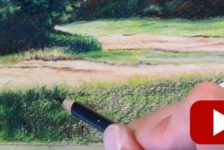Mekel Park, by Mecanoo in Delft, the Netherlands. The Delft University of Technology (TU Delft), one of the most prestigious of its kind in the Netherlands, aimed in 2004 to transform the busy and broad Mekel Road, which splits the campus in half, into a spectacular park. The goal was to bring to the campus the high quality of life in the city of Delft. Located in the heart of the campus, the park bridges the buildings of all the faculties and, because of this, it symbolizes the university’s international and interdisciplinary character, bringing together in a pleasant way people with different cultural and academic backgrounds.
The Green Heart At 80 meters wide and 800 meters long, this park contributes to the university’s reputation and provides an attractive meeting point for students and teachers. The so-named “green heart” gained by the TU Delft campus is a planted corridor for pedestrians, cyclists, skaters, and public transport, crossed by an attentively composed network of paths. Mekel Park is part of a master plan for a 10-hectare campus park with faculty squares and the integration of a tram line. The design of this park is the result of an excellent collaboration among the Mecanoo architects, TU Delft, the municipality of Delft, and Metropolitan District Haagland. The main theme of this project is sustainability, provided by the four sub-themes of health, energy, environment, and mobility.Road Transformed into a Spectacular Park
The Mekelweg (Mekel way), a broad and noisy road surrounded by vast parking lots that used to run through the middle of campus, has been transformed by this project into a lush park with colorful trees. The Mekel Park, covering 6.4 hectares, is bordered on one side by an esplanade called the Nieuwe Delft (The New Delft), which connects the pedestrian promenade, faculty buildings, and lounge areas.
The New Delft traces a link between the city and the campus, maintaining a symbolic connection with the existing Oude Delft (Old Delft), where the original university buildings stood 165 years ago. The name of Nieuwe Delft is the result of a competition in which university students and teachers provided suggestions. An Arterial Route Buses and trams transport students, teachers, and visitors to the three stops along the 832-meter promenade. The tram line number 19 turned the campus into a car-free zone, allowing pedestrians to enjoy the park in a quiet and calm environment. The park is a mix of promenades, rolling green lawns complemented by zigzag pathways, and vibrant bands of trees of various species. The park has a stone bench stretching for one kilometre that represents the meeting point for international students and staff of the TU Delft, where they can stroll, read, study, debate, eat, and have a coffee. The pavement, a mix of cleft granite, contributes to the unique and valorous character of the campus. Related Articles:- Car Park Turns into Public Park!
- Private Estate Reveals State of The Art Underground Car Park
- The Dark Secrets Behind Sustainable Urban Design Revealed in Şışhane Park
- Landscape Architecture Now! by Philip Jodidio
- Street Design: The Secret to Great Cities and Towns by John Massengale
Article by Diana Ispas Return to Homepage
Published in Blog

